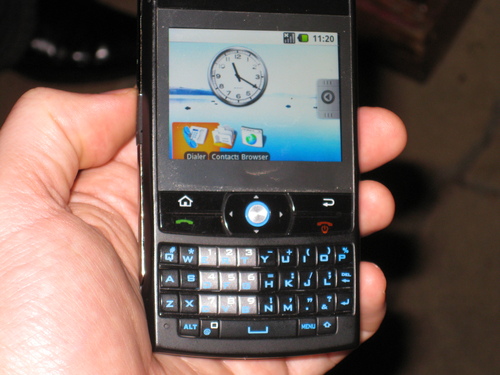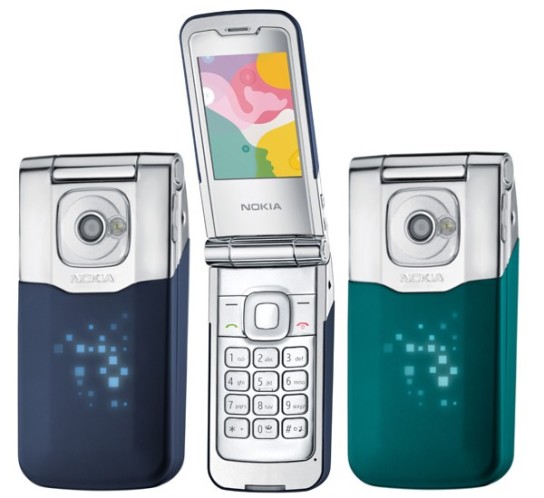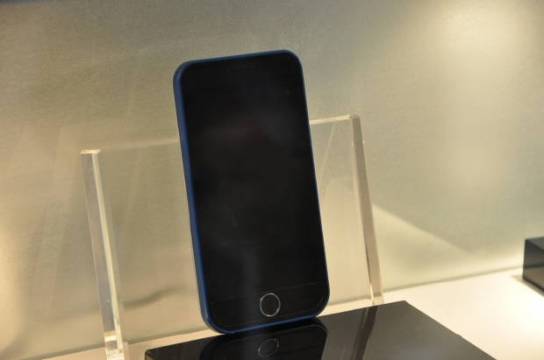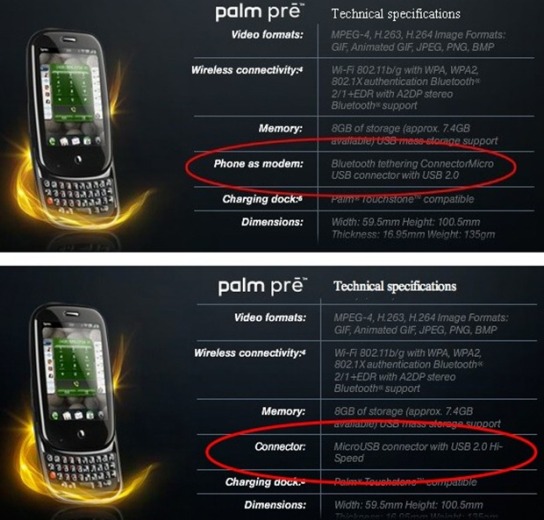HTC uses Twitter to confirm Touch Pro2 coming to North America
By Greg Kumparak
Last time HTC used Twitter to confirm something, it was to let everyone know that the HTC Touch HD wouldn’t be coming stateside. This time, they bring good news!
We were already pretty sure that the Touch Pro2 was headed for North America when the official press release outright said “global availability”, but HTC has since confirmed it to their followers. They’re not saying when or which carrier (if any) will get it, but it’s good to know – for sure this time – that it’s on the way.
The related tweets:
# And to answer the big question on everyone’s minds, the Touch Pro2 will be broadly available in all major markets, including North America. 11:07 AM Feb 20th from web
# All, we have not announced a launch date for the Touch Pro2 in any country yet. But we did announce we will start to roll it out late Q2. 11:14 AM Feb 20th from web
# orry, can’t answer questions about specific carriers anywhere in the world. Please talk to them about if or when they’ll carry something. 11:30 AM Feb 20th from web
Source: mobilecrunch
Read Full Post | Make a Comment ( None so far )Video shows great concept iPhone App management inside iTunes
By David Gonzales
What if you could rearrange the icons on your iPhone’s home screen directly through iTunes while syncing and charging? Yep, that would surely be great, wouldn’t it? Apple is slow to adopt this great feature, but you don’t have to wait until they do to see just how wonderful it would be. Simply play the video above and see for yourself — I needn’t say anything else.
Source: electronicpulp
Read Full Post | Make a Comment ( None so far )Much fabled Kogan Agora Android phone prototype gets hands-on’d
By Greg Kumparak
Back in December, the Kogan Agora was revealed and caused all kinds of excitement amongst mobile geeks. Not only was it going to be dirt cheap (around $250 bucks, unsubsidized), and not only was it being pushed out by what was about as close as you can get to a mom-and-pop electronics manufacturer, but it looked like they were going to beat just about everyone besides HTC to getting an Android product on the shelf. Then it got canned.
Cries of vaporware rang through the halls, many believing it never truly existed. It did exist, however, and the proof is now out there; in an experience I would assume was akin to petting a unicorn whilst having a skype chat with bigfoot, Gizmodo Australia got to poke and prod at a real life working prototype – and they liked it!
Ruslan Kogan’s still staying keeping mum on why the Agora won’t see the light of day, but reaffirms that Kogan’s not done with Android yet. To quote Giz:
The final release model will almost certainly ditch the qwerty keypad for a 3.8-inch, iPhone like touchscreen which will take advantage of the cupcake update’s onscreen keypad.
Source: mobilecrunch
Read Full Post | Make a Comment ( None so far )Review: Nokia 7510 for T-Mobile
By John Biggs
I found a new phone for my Mom. It’s the Nokia 7510, a basic flip phone with just enough features to be dangerous yet it’s basic enough for even my sainted mother to use to dial us on the daily.
The 7510 is a phone for the ladies, plain and simple. That’s not to disparage the ladies – it’s just that I haven’t seen a simple, stylish phone that’s not too expensive yet still packs lots of features into a slim package.
It’s clad in brushed steel and chrome and has removable front and back faceplates – it comes with brown, blue, and red in the box. I was particularly enamored of the front monochrome LCD that shows the current time along with pertinent notifications.
On T-Mobile the phone also has IM and email support using T-Mo’s own software deck. The keypad is large and shiny but you’re still going to be hunting and pecking if you really want to do some heavy duty emailing. The device is also UMA/HotSpot@Home and My Faves compatible.
Other than those basic features, you’re pretty much dealing with a standard flip phone with 2 megapixel camera, music player, and FM radio. You get up to three hours of talk time with 12 days of standby and it works internationally. The best thing? It costs $49 after rebate, which is just right for Mom.
There is some discussion out there on durabilty and the plastic faceplates might be a weak under an onslaught of use. However, if you’re keeping this in a pocket or bag and making a few phone calls – that means you, Mom – you really can’t go wrong. After all, my Mom still has her RAZR in pristine condition and it’s probably five years old now.
Bottom Line: A cheap, thin flip phone with enough features to warrant a second look.
Source: mobilecrunch
Read Full Post | Make a Comment ( None so far )Found Footage: Swing yer iPhone ’round and ’round with Danglet
By Steven Sande
For those of you who have been anxiously awaiting a way to hang your iPhone or iPod touch from your neck or wrist, your wishes have been answered! There’s a new accessory called the Danglet that plugs into the dock connector port on the bottom of your favorite device, then clips onto a wrist or neck strap. The neck strap in particular would be an excellent accessory for anyone who needs to have both hands free, yet have immediate access to their iPhone (geocaching, anyone?).
Towards the end of the video above, you can see the obviously unpaid actors swinging their iPhones around by the straps. Personally, I kept expecting to see one of the phones flying off into the trees or pavement. Much to my relief, the Danglet mechanism appears to be well-designed and kept the devices from becoming projectiles.
The Danglet retails for $14.99 and includes both a hand strap and neck strap. Do not use your Danglet to turn your iPhone into martial arts weaponry.
Source: tuaw.com
Read Full Post | Make a Comment ( None so far )Huawei Android smartphones hitting T-Mobile later this year
By Matt Burns
Huawei’s Android phone broke cover last week and while we weren’t able to get all touchy-feely with it yet, we might be seeing the phone soon. Reportable, the phone set to come from T-Mobile and carry the same nameplate as the brand. Details are still developing but it seems that the touchscreen ‘UPhone’ (their words, not ours) will start shipping sometime in the late summer of 2009.
We’re not entirely sure what market it will hit first though: T-Mobile US or T-Mobile the rest of the world. Hopefully it will drop on both America and Europe giving everyone more Android options even though the HTC Magic appears to be the Android phone to beat. Still, we’ll welcome more Android options.
Source: mobilecrunch
Read Full Post | Make a Comment ( None so far )First look at Boost Mobile’s new “Unwronged” TV spot
By Peter Ha
Boost Mobile recently unveiled their $50 unlimited plan that includes nationwide talk, text, web and walkie-talkie. With that new plan comes a marketing blitz and what Boost calls the Unwronged campaign. The first ad in this campaign was kind of revolting, but I’m not keen on hirsute women. Check out the exclusive “Coroner” spot that’s set to air starting tomorrow after the jump. I guess these are better than the George Washington spots.
Read Full Post | Make a Comment ( None so far )
HTC’s The Only Google Android Game In Town, For Now
by Andrew R Hickey
All eyes were on the Mobile World Congress in Barcelona this week with the expectation that device makers would lift the curtain on a host of new Google Android-based devices.
But as mobile heavyweights pack up and leave the show, it appears Taiwanese mobile device maker HTC is the first and only manufacturer to capitalize on the much-talked-about open-source Google Android platform.
Other smartphone builders have paid lip service to Android, promising devices within the year, or even into 2010. Device makers like Huawei, Samsung, Motorola and Sony Ericsson have all made note of their Android plans, but so far, it’s all been just talk.
There was little mention of Android among the myriad devices announced at Mobile World Congress. Most attention was paid to Microsoft’s mobility strategy, which included an updated Windows Mobile operating system, version 6.5, a new cloud-based mobile syncing service and an mobile application store called Marketplace.
HTC, on the other hand, has single-handedly cornered the market with little to no competition, releasing the only true Android-based handhelds into the market. HTC also released a pair of new Windows Mobile devices at Mobile World Congress, but it was its Android-focused smartphones that took center stage.
HTC hit the market with the first Google Android phone, the T-Mobile G1, in October, and hasn’t looked back.
And at the Mobile World Congress this week, HTC continued that momentum, unveiling the HTC Magic, the next Android touch screen in its arsenal. Dubbed “Android No. 2” the Magic takes some if its cues from the G1, though it will not feature the slide-out QWERTY keyboard that set the G1 apart from other touch-screen titans like the Apple iPhone 3G and the BlackBerry Storm.
At the onset, the Magic will only be available through Vodafone, meaning European smartphone users will get a taste of Android in the U.K., Spain, Germany, France and Italy. There are rumors that the HTC Magic will eventually make it to the U.S., but they have not been confirmed.
According to HTC, the Magic, which will be released in the spring, features a 3.2-inch TFT-LCD touch screen with 320 x 480 HVGA resolution. It also features a navigation trackball similar to its U.S. counterpart, an internal GPS antenna, Bluetooth 2.0 connectivity, Wi-Fi and a 3.2-megapixel camera.
Like the G1, the Magic will support most Google Applications, including search, Gmail, Google Talk and Google Maps.
And on Friday, SingTel, Asia’s largest communications provider, said it will begin selling the HTC Dream, another HTC smartphone with Google Android guts, come Feb. 21.
Like previous HTC releases built on Google Android, the SingTel’s Dream will provide access to most Google applications and SingTel will offer subscribers video-on-demand via the handheld, according to Reuters. SingTel also launched the Dream in Australia earlier this month.
HTC’s Android dominance comes as other device makers either delay or are just ramping up their Android plans.
Korean smartphone maker Samsung was expected to unveil a new Android device at Mobile World Congress but reportedly scrapped those plans, delaying the release to later this year as it hammers out talks with various carriers.
Motorola has also been rumored to be focusing heavily on Google Android devices, the fruits of which remain to be seen. Same goes for Sony Ericsson, NTT DoCoMo and Garmin.
Huawei, too, used the Mobile World Congress to tout its upcoming Android handset, but few details were available.
As it stands, HTC has the Android device market locked down, having the only Android devices in production. For the rest jumping on the open-source bandwagon, they’ll have to play catch-up.
Source: crn.com
Read Full Post | Make a Comment ( None so far )Palm Pre no longer features data tethering on Sprint website
by Doug Aamoth
Perhaps we shouldn’t read too far into this, but here’s what happened. The technical specifications on Sprint.com for the Palm Pre used to list “Phone as modem” with Bluetooth and USB tethering as a feature. Now, however, that feature is gone. You’ll recall that earlier this week, Sprint announced its Simply Everything Plan + Mobile Broadband for $150 per month.
Hopefully the recent plan announcement and the supposed removal of the tethering feature isn’t a coincidence. If people had been thinking they could get a Pre for, say, $99 per month for voice, data, and tethering only to be saddled into shelling out an extra $50 per month just to tether, that’d be a big problem for Sprint. The company needs to make up for the 1.3 million subscribers it just lost. I’m no Dan Hesse, but touting built-in tethering as a feature of the Pre and then removing it might not be a great way to do attract customers.
Again, this might be nothing. The phone isn’t even out yet. Let’s hope you can tether with the Pre, though. Sprint desperately needs a gotta-have-it phone with a gotta-have-it plan.
Source: crunchgear
Read Full Post | Make a Comment ( None so far )Once more, with feeling: Microsoft says isn’t making its own phone
Microsoft officials emphasized again this week that the company is not — contrary to evidence and opinion — making its own Microsoft-branded phone.
Financial analysts attending the Mobile World Congress show in Barcelona this week asked Andy Lees, Senior Vice President for Mobile Communications, during a Q&A session on February 16 about Microsoft’s phone plans. (I listened to the Q&A with analysts via a Webcast.)
Lees acknowledged Microsoft has been beefing up its hardware-engineer headcount in its mobile business unit, as of late. (A good part of that new headcount is the result of Microsoft basically disbanded the Zune business, sending the software engineers to Media Center TV land and the hardware-focused folks to the Mobile business unit.)
But Lees insisted that Microsoft is adding to its hardware ranks inside the mobile unit not because it is building a phone itself, but because it is attempting to provide tighter hardware/software/services integration in the phone space.
create a runaway best-selling phone is for a vendor to provide both the hardware and the software, like Apple is doing with the iPhone. Lees said Microsoft’s intent is to provide users with a choice of third-party phones at variety of price points — and to work hand-in-hand with phone makers to ensure the software is tailor-made for their phones.
So what about Danger — the company behind the T-Mobile Sidekick that Microsoft acquired in 2008, analysts asked Lees. Lees reminded the financial folks that Danger doesn’t make phones; Sony makes the Sidekicks sold in the U.S. Microsoft bought Danger for its services know-how.
“It’s true we are working significantly closer with hardware engineers, silicon vendors and OEMs,” Lees said. “Part of our strategy is to get very close to that.” But to assume “they must be doing a Zune phone” or “they must be making a phone” is not an accurate leap to make, Lees said. He emphasized again that Microsoft is charging phone makers a royalty per phone — the size of which he equated to the price of a piece of glass used in a cell phone. But Microsoft is not making its own branded phones, he stated again.
Lees admitted that Microsoft increased focus on tighter hardware-software integration is “a change from what we’ve done historically.” He said that while the phone operating-system is important, seamless “end-to-end experiences” are more so.
Studies have found that after making calls and sending text messages, the No. 3 task consumers do with their cell phones is take pictures, Lees said. Microsoft wants to streamline the end-to-end experience of capturing/manipulating/sharing/storing pictures and is working more closely with phone makers to enable a better user experience with this kind of scenario
Source: zdnet.com
Read Full Post | Make a Comment ( None so far )






